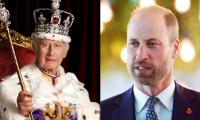embraced lowest percentage of urban population by only 20 percent. Jhang city had 26 percent increase, Hyderabad 28.1 percent, Kasur 29.1 and Sargodha 29.6 percent. These cities are at the bottom of the chart.
Following the same pattern, the report has also predicted the projected population of next 15 years till 2030. According to these predictions except for Islamabad where the increase in urban population would dropped from 73 percent to 66 percent, every city would face significant increase in their urban population. The ratio of increase in urban population of Bahalpur has been projected by 62 percent, Larkana by 61 percent, Quetta by 56 percent and Sheikhupura by 57 percent.
The report further projects that in 2030 Sialkot would face 45.6 percent increase in its urban population but it still is on bottom of the list of these 25 cities list.
PKI urges govt to take action against Akhtar Mengal, Mahrang, and their associates to eliminate anti-national elements
Barrister Saif reaffirms that his top priority was economic development and political stability of country
Critics accuse Norway's Partiet Sentrum party of "using a possible Peace Prize nomination to win votes"
Minister acknowledges efforts of Chaudhry Shujaat Hussain in maintaining peace in Balochistan
Waqas describes PM Shehbaz’s three-year tenure as one of darkest periods in country’s history
HED asked to ensure that all universities under its jurisdiction take necessary actions to prevent harassment







